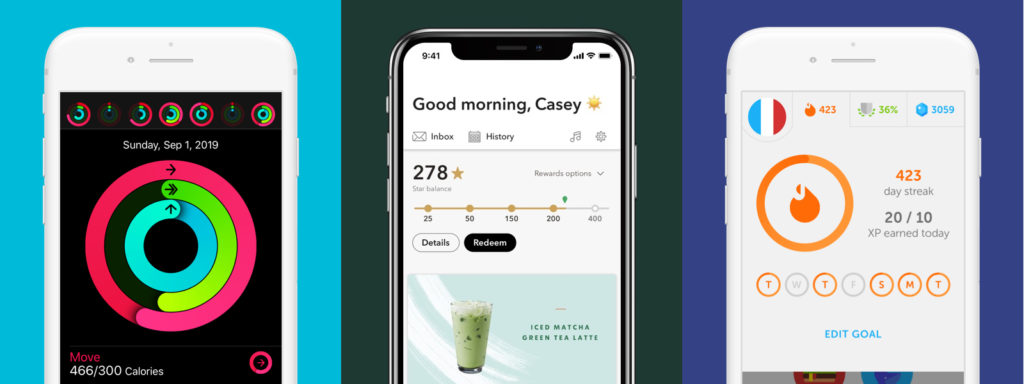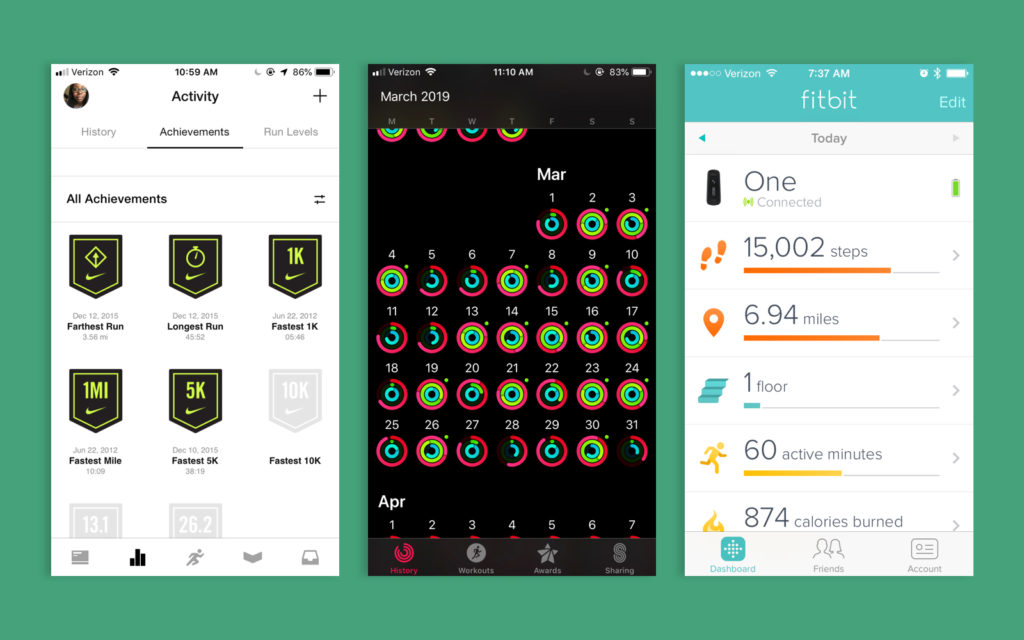The Power of Gamification: Transforming Users into Loyal Fans

Article by Ayana Campbell Smith — Dec 20, 2022

More than two decades in, it’s safe to say that gamified software is more than a passing fad. For product designers, elements of gamification — guidance, achievements, status — are a powerful means of motivation and engagement. There’s an innate psychological drive behind it all: do better, do more, do often.
Gamification is an all-ages show, despite what the name may imply. It’s a staple in classrooms and educational technology, sure, but you’ll also run into it for online purchases, business process management, and while picking up a coffee.
As a technique, let’s take a look at the roots, benefits, and some tips on correctly setting up a gamified experience.
What is Gamification?
Points, leaderboards, levels, events, badges, unlockables, challenges, progress: Gamification works just how it sounds, applying game mechanics to applications that otherwise wouldn’t be game-like. We all interact with these sorts of systems on a regular basis, with examples like:
- Apple Watch’s “friendly” nudge to stand up, move around, and meet fitness goals.
- Starbucks rewards and their unique brand of currency that comes with each purchase.
- Duolingo’s daily streaks and language-learning tracks.

Each feature is a beacon, asking users to stop what they’re doing and shift their attention. There’s a power there, affording user experience influence over someone’s behavior — something that can wade into ethically muddy waters.
As with any other engagement driver, it’s no wonder organizations the world over want to give gamification a shot.
The Benefits of Gamification
Done correctly (and ethically), there’s a gamification sweet spot that benefits both sides of the software equation. Here are the key advantages to finding a balance.
Game Mechanics Tie to Innate Human Desires
Gamified experiences fulfill some of our built-in desires as humans. Esteem (both for yourself and from others) has a prominent place on Maslow’s hierarchy of needs, after all. So, adding a few of these mechanics to our product design toolbox can help users scratch a figurative itch for positive behavior — all while creating demand for engagement.

Guiding Users Through Content and Features
What should I do next? On their own, features like tasks and lessons may be overwhelming to sort through and sequence. Gamification adds order: a tried-and-true template for concepts like levels, unlockables, and an opinionated series of content that users can follow along. It runs parallel to the concept of expertise too, giving creators the power to arrange a subject how they see fit.
Take Duolingo’s latest redesign. There’s a very clear system to their language lessons, and users are given a guiding hand.
Increasing Loyalty and Engagement
Gone are the days of loyalty punch cards we’d carry around for smoothies and sandwiches.
Gamified experiences are a siren call for new users, but real engagement comes from repetition. Gamification adds the rewards and reasons for users to come back for more — and, when done well, it’s a clear competitive advantage.
Tips for Adding Gamification
Benefits? Check. Now, how do we go about adding these mechanics? Here are a handful of tips for setting off on a gamified path.
Common Applications of Game Mechanics
What’s possible could fill several books. We’ll stick with the abridged version and cover some of the most popular ways gamification pops up in everyday apps:
- Earning points, badges, and achievements
- Leaderboards that rank and publicize your success
- Content that’s segmented into levels or missions
- Reminders and notifications around fixed-time tasks
- Time-limited events, usually with special collectibles
- Engagement-derived rewards and discounts
- Celebratory animations and certificates tied to progress
- New features or walled content unlocked through mastery
The sky’s the limit here. Creativity is the best part of drawing on game mechanics, but this short list offers a place to start.
Setting Realistic Expectations on Users’ Time
Achievements can be easy, difficult, or just plain weird, and mixing all three in your application is fun unto itself. The trick is making sure the reward matches the effort: Does it feel earned, or does it feel like a job?
Even the biggest companies stumble here. Reddit’s most downvoted post of all time is an EA employee attempting to justify why a popular character needed 40+ hours of in-game effort to unlock. At best, users will think it’s misguided. At worst, it’s greedy — especially if there’s a pay-to-win shortcut, as we’ll touch on later.
Consider a Gamification Opt-Out
Not everyone’s in it to win it. Gamification is worth treating as accessibility-adjacent: Just like software that’s too bright, loud, or motion-intensive, competition can cause someone to call it quits. Where possible, consider giving users the power to opt out.

Adding Context to Competition
Maybe you’re good at running, but how do you stack up to the rest of the world?
For a global application, context is key. Results from everyone, everywhere (all at once) may be depressing. Lining up against other folks from work, a run club, a friend group, or your city, though, could be a solid motivator.
Gamification Can Be Problematic
Throughout this article, we’ve been talking through mechanics that increase engagement and run parallel to psychology. In a twist that’ll surprise no one, gamification can be an instrument for evil. It’s a huge topic, so we’ll just introduce a few key areas to look out for.
Game Mechanics Tie to Innate Human Desires
“Hey, this has the same heading as an earlier section,” you may be thinking, and you’re quite right. There’s a thin line between engaged and addicted, and gamification provides the power to step over that line. As UX practitioners, we have an ethical responsibility to avoid harmful interfaces and interactions.
Ask yourself: Are we doing this (this way) for the good of the user or the good of the business?
Evil Intent is a Short Hop Away
Competition, progress, and unlockables all pave the way for monetization. Can users pay to skip ahead? What if we introduce gameplay limits unless they pay?
There’s an entire (very successful) category of mobile gaming that operates off artificial walls. Addicted or impatient players have the option of foregoing the arbitrary limit with an injection of cash, but is that ethical? It’s a hard question: The game needs to make money to exist, but should it tie revenue to the psychology of addiction?
The Delicate Balance of Guidance and Freedom
Control leads to compliance. Autonomy leads to engagement.
Just like the bit about opting out, users may learn or advance in very different ways. Some will thrive with clear, direct guidance; others will want the freedom to explore and carve their own path. Consider offering a sequence and a freeform journey.
Weighing Delight and Gamification
At the end of it all, gamification is another tool in our bag. Everything doesn’t need game mechanics, and it’s not a gatekeeper for everything fun. For some parting notes, remember:
- There are plenty of situations where gamification is inappropriate. Operation is an entertaining game, but an application that helps surgeons during an operation doesn’t need buzzing or unlockables.
- Game mechanics should be added for the good of the user’s experience and need fulfillment, not to prey on some sense of psychological need or addiction.
- Sometimes, you’re really just looking for delight in design.
Up Next —
The ABCs of Software Development
There are certain terms you’ll hear over and over when working with software teams on your project. Use this primer to make sure you’re on the same page.
Read this Article →
